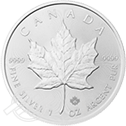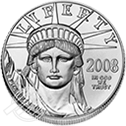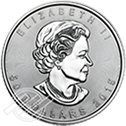What Is Digital Currency?
The internet makes the world feel smaller.
From the comfort of the couch, people and businesses across the globe can now connect and transact.
With that, a digital economic ecosystem—fueled by digital currency—has blossomed.
As we adapt and rely less on cash, many ask, “What is digital currency?” and wonder how digital currency works.
Understanding Digital Currency and Its Importance
Digital currency—also known as digital dollars—is currency available only electronically.
You access your digital currency exclusively with a computer or mobile device, and none of the types of digital currency have a tangible form such as dollar bills or coins.
So what is the digital dollar good for if it has no tangible form?
You can use digital money as payment for goods and services, as a store of value, or as a speculative investment.
How Digital Currency Works
After using physical money your entire life, you may be confused about how digital currency works.
Most digital currency—such as cryptocurrency—directly connects the parties involved in a decentralized transaction.
Decentralization means that no third party or intermediary—such as a bank, financial institution, or government—is needed to complete a deal.
Deals using crypto are completed on the blockchain. The blockchain consists of a series of information packets called blocks.
All those involved must agree upon the information contained in each block. Strung together, the blocks form a chain.
The chain is immutable and final. Changes occur only with the approval of all concerned parties.
No offline identifying information is sent over the blockchain, making crypto transactions virtually anonymous.
Digital currency transactions—fast, anonymous, and inexpensive— are revolutionizing how people send money across borders.
Those far away can instantly send what is a digital dollar to loved ones back home.
Funds transfer immediately, and all parties maintain a modicum of safety and privacy.
Digital dollars allow those without a bank to safely store, access, and spend their funds.
Types of Digital Currency
All cryptocurrency is digital currency, but not all digital currency is crypto.
Three of the main types of digital currency are:
- Cryptocurrency
- Central bank digital currency
- Virtual currency
Each has its own utility and unique rules.
Cryptocurrency
Created by encryption algorithms, cryptocurrency is used as a form of payment, a store of value, and as a speculative investment.
Cryptocurrency enables immediate, safe, anonymous, and decentralized transactions.
Many governments—such as the U.S.—don’t consider crypto to be real money, but many people use it as such if mutually accepted as payment for goods and services.
There are thousands of cryptocurrencies. Bitcoin is, by far, the most popular and most valuable crypto.
Central Bank Digital Currencies (CBDCs)
CBDC is digital currency issued by the central bank of a nation.
It has the same value as the issuing country’s fiat dollar.
Many governments are considering CBDCs because they can:
- Give financial access to those without bank accounts or access to a bank.
- Eliminate the risk of bank failure.
- Lower the cost of cross-border transactions.
- Connect central banks directly with consumers.
- Allow easy and fast implementation of monetary policy.
Virtual Currencies
Virtual currencies allow for easy and fast transactions within software programs and computer applications.
Issued by developers and private parties, virtual currencies serve as a form of payment within specific online communities, such as gaming or gambling.
Virtual currencies cannot be redeemed or converted into monetary value.
Advantages and Disadvantages of Using Digital Currency
Created mostly as a means to be autonomous, digital currency’s strengths can sometimes be its weaknesses.
As the types of digital currency and their uses expand, governments and users must navigate both the pros and cons.
Pros
Digital money provides the following benefits:
- Speedy transactions. There is no wait time for a bank or other financial institution to clear or confirm a transaction.
- Cheaper international transfers. Digital currencies can make cross-border transactions more cost-effective because they happen directly between parties and do not involve traditional intermediaries like financial institutions.
- Decentralization. Most digital currency operates directly between the parties of a transaction. Intermediaries such as banks, financial institutions or governments are not necessary.
- Privacy. No offline identifying information transmits over the blockchain.
- Broader access. Unbanked individuals can access their funds.
Cons
Some of the disadvantages of digital currency include the following:
- Transactions are irreversible. Once it’s done, it’s done. There are no chargebacks or returns.
- Lack of regulation. Governments are still evaluating and creating rules and regulations regarding digital money.
- Prone to hacking. Anything that runs through computer programs is somewhat susceptible to hacking.
- Can be used for illegal purposes. The direct and nearly anonymous nature of digital currency makes it a popular choice for illicit dealings.
- Potentially irretrievable. It cannot be retrieved if the wallet key is lost.
- Lack of stability. Cryptocurrency prices can be very volatile.
The Future of Digital Currency
Digital currency may not ever fully replace physical money, but it has already proven itself useful to society.
The future of digital currency is now. It is only getting brighter as the world discovers its current usefulness and creates new utility.
As with anything new, you have to do your homework and learn the ins and outs of digital currency.
A truly balanced portfolio may contain a speculative investment—such as bitcoin or other cryptos—yet be anchored by a tangible asset.
Many in search of this balance turn to the Gold IRA and Silver IRA.
You can convert paper assets into physical gold and silver—bars and coins—with an IRA rollover.
If you are 59 ½ with a current 401(k), or if you have a 401(k) from a previous employer, the team at Advantage Gold can help.
For the last decade, we have been educating clients on tangible asset ownership.
As the highest-rated precious metals firm, we take pride in making the process of moving into a precious metals IRA quick and painless.
We have thousands of 5-star reviews online, so take a moment and see what our clients have to say about their experiences.
Then give us a call, or click the link and we’ll contact you.
We look forward to it.
Tags: how digital currency works, the future of digital currencies, types of digital currency, what is a digital dollar, what is the digital dollar


